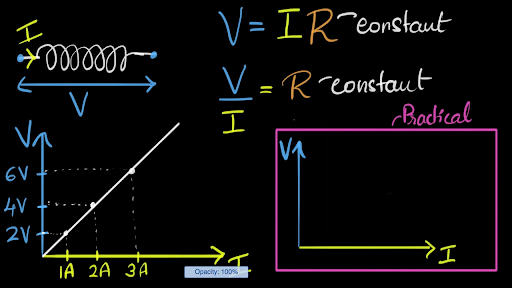Current Resistance Potential Difference Equation

Potential difference can also be measured using the formula v ir where i is the current charge and r is the resistance.
Current resistance potential difference equation. The formula for measuring potential difference is v w q and this formula is known as ohm s law. The resistance of the circuit has an effect on the size of the current. Math i v r math it is also expressed in two more. You can calculate current using the given formula.
In this equation v is equal to the potential difference w is the energy transferred or work done and q is the amount of the charge. The resistance of an electrical component can be found by measuring the electric current flowing through it and the potential difference across it. Find the current flowing through a 3 ω resistor when a potential difference of 30 v is applied. Yet while this equation serves as a powerful recipe for problem solving it is much more than that.
This equation called ohm s law shows the. Current i voltage v resistance r i amps v volts r ω for example. The ohm s law equation can be rearranged and expressed as. Current potential difference and resistance electrical current transfers energy around circuits.
As an equation this serves as an algebraic recipe for calculating the current if the electric potential difference and the resistance are known. The unit of potential difference is the volt v which is equal to a joule per coulomb j c. When a voltage v and resistance are given then you ought to use a formula for current. Ohm s law as a predictor of current.
The equation v ir means that the potential difference or voltage across a resistor can be found by multiplying its resistance by the current flowing through it.


















